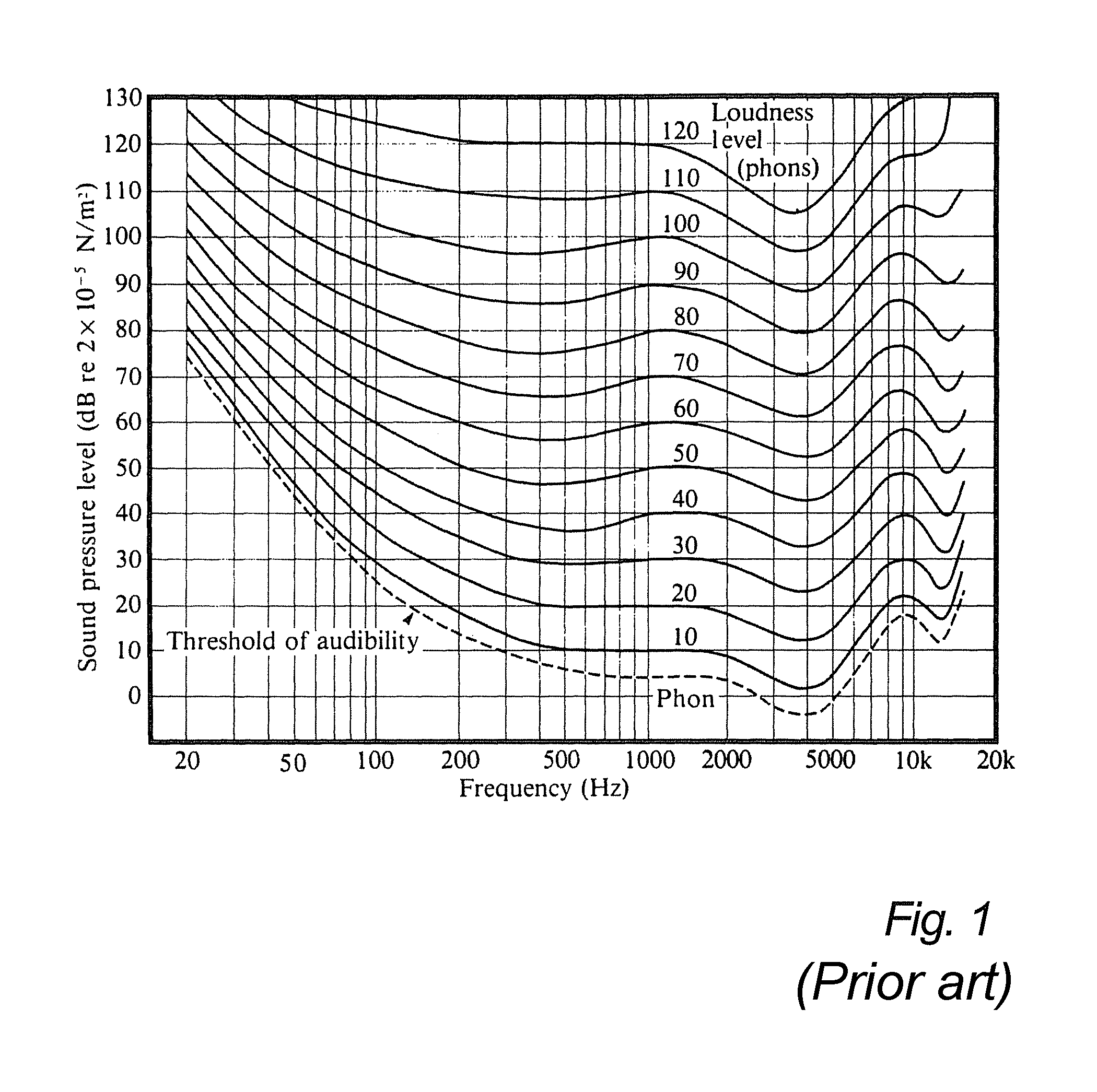Bass enhancement
- Summary
- Abstract
- Description
- Claims
- Application Information
AI Technical Summary
Benefits of technology
Problems solved by technology
Method used
Image
Examples
Embodiment Construction
[0081]Audio frequencies below approximately 300 Hz are called the bass. There are several aspects of these low frequencies which cause challenges, especially for small and medium-sized reproduction systems.
[0082]A large amount of the total power of a music signal lies in the bass range. This is especially true for electrically generated and / or amplified music with instruments like the electric bass guitars, kick drums and synthesizers, but also for large church organs. Movie productions may also contain a significant amount of low frequency energy for various effects.
[0083]The ear is relatively insensitive to bass, especially at low levels. At high levels the ear is approximately equally sensitive to all frequencies, however. This means that there is less physical dynamic range in the bass (compared to medium and high frequencies) for full perceptual dynamic range.
[0084]Perception of pitch is well understood: See e.g. Eberhard Zwicker and Hugo Fastl, “Psychoacoustics—Facts and Model...
PUM
 Login to View More
Login to View More Abstract
Description
Claims
Application Information
 Login to View More
Login to View More - R&D
- Intellectual Property
- Life Sciences
- Materials
- Tech Scout
- Unparalleled Data Quality
- Higher Quality Content
- 60% Fewer Hallucinations
Browse by: Latest US Patents, China's latest patents, Technical Efficacy Thesaurus, Application Domain, Technology Topic, Popular Technical Reports.
© 2025 PatSnap. All rights reserved.Legal|Privacy policy|Modern Slavery Act Transparency Statement|Sitemap|About US| Contact US: help@patsnap.com



